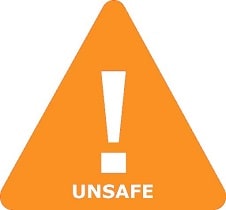Is Cedulamin Safe in Breastfeeding
Question
I am a breastfeeding mother and i want to know if it is safe to use Cedulamin? Is Cedulamin safe for nursing mother and child? Does Cedulamin extracts into breast milk? Does Cedulamin has any long term or short term side effects on infants? Can Cedulamin influence milk supply or can Cedulamin decrease milk supply in lactating mothers?
Cedulamin lactation summary

- DrLact safety Score for Cedulamin is 5 out of 8 which is considered Unsafe as per our analyses.
- A safety Score of 5 indicates that usage of Cedulamin may cause serious side effects in breastfed baby.
- Our study of different scientific research indicates that Cedulamin may cause moderate to high side effects or may affect milk supply in lactating mother.
- Our suggestion is to use safer alternate options rather than using Cedulamin .
- It is recommended to evaluate the advantage of not breastfeeding while using Cedulamin Vs not using Cedulamin And continue breastfeeding.
- While using Cedulamin Its must to monitor child for possible reactions. It is also important to understand that side effects vary largely based on age of breastfed child and time of medication in addition to dosage.
- Score calculated using the DrLact safety Version 1.2 model, this score ranges from 0 to 8 and measures overall safety of drug in lactation. Scores are primarily calculated using publicly available case studies, research papers, other scientific journals and publically available data.
Answer by Dr. Ru: About Cedulamin usage in lactation
We are working on a comment for this product.
Answer by DrLact: About Cedulamin usage in lactation
Both methenamine and mandelic acid pass into milk in small quantities. Cedulamin appears acceptable to use, even while nursing a newborn.
Cedulamin Side Effects in Breastfeeding
Four newborn infants were allowed to breastfeed in one study after a maternal dose of 1 gram of methenamine hippurate. No adverse effects were reported.[1] Six infants were allowed to nurse during maternal ingestion of the large daily dosage of 12 grams of mandelic acid. There was no clinical or laboratory evidence of harm to the infants.[2]
Alternate Drugs
Trimethoprim(Safe)
Methenamine Mandelate(Unsafe)
Nitrofurantoin(Safe)
Fosfomycin(Safe)
Nalidixic Acid(Low Risk)
Methenamine(Unsafe)
Cefazolin(Safe)
Penicillin G(Safe)
Cephalexin(Safe)
Trimethoprim(Safe)
Methenamine Mandelate(Unsafe)
Iodine(Unsafe)
Cefadroxil(Safe)
Oxytetracycline(Safe)
Cefuroxime(Safe)
Polymyxin B(Safe)
Teicoplanin(Safe)
Ceftriaxone(Safe)
Vancomycin(Safe)
Loracarbef(Safe)
Mupirocin(Safe)
Cefaclor(Safe)
Ofloxacin(Safe)
Fusidic Acid(Safe)
Erythromycin(Low Risk)
Lomefloxacin(Low Risk)
Norfloxacin(Safe)
Ceftibuten(Safe)
Clindamycin(Low Risk)
Levofloxacin(Low Risk)
Nitrofurantoin(Safe)
Ceftazidime(Safe)
Trovafloxacin(Unsafe)
Kanamycin(Safe)
Chlorhexidine(Safe)
Bacampicillin(Safe)
Cefprozil(Safe)
Tobramycin(Safe)
Aztreonam(Safe)
Ticarcillin(Safe)
Gentamicin(Safe)
Ampicillin(Safe)
Neomycin(Safe)
Cefoxitin(Safe)
Gatifloxacin(Low Risk)
Fosfomycin(Safe)
Nalidixic Acid(Low Risk)
Cefotetan(Safe)
Tetracycline(Safe)
Enoxacin(Low Risk)
Colistimethate(Safe)
Amoxicillin(Safe)
Cefotaxime(Safe)
Streptomycin(Safe)
Doxycycline(Low Risk)
Sulfasalazine(Safe)
Tinidazole(Safe)
Nafcillin(Safe)
Capreomycin(Low Risk)
Dicloxacillin(Safe)
Metronidazole(Safe)
Amikacin(Safe)
Moxifloxacin(Low Risk)
Ertapenem(Safe)
Cefixime(Safe)
Procaine Penicillin G(Safe)
Demeclocycline(Low Risk)
Cefepime(Safe)
Piperacillin(Safe)
Cloxacillin(Safe)
Floxacillin(Safe)
Methicillin(Low Risk)
Ciprofloxacin(Safe)
Sulfamethoxazole(Safe)
Methenamine(Unsafe)
Cefdinir(Safe)
Penicillin V(Safe)
Cephradine(Safe)
Sulfisoxazole(Safe)
Chloramphenicol(Unsafe)
